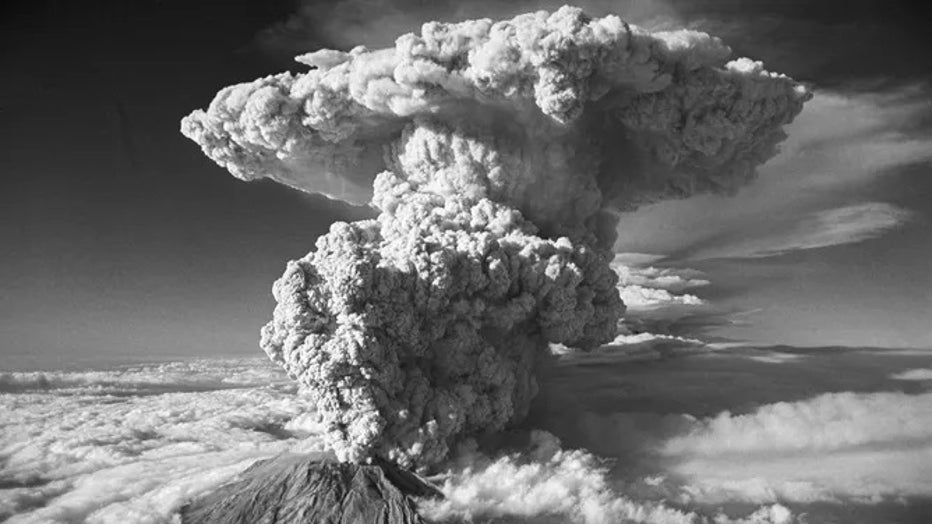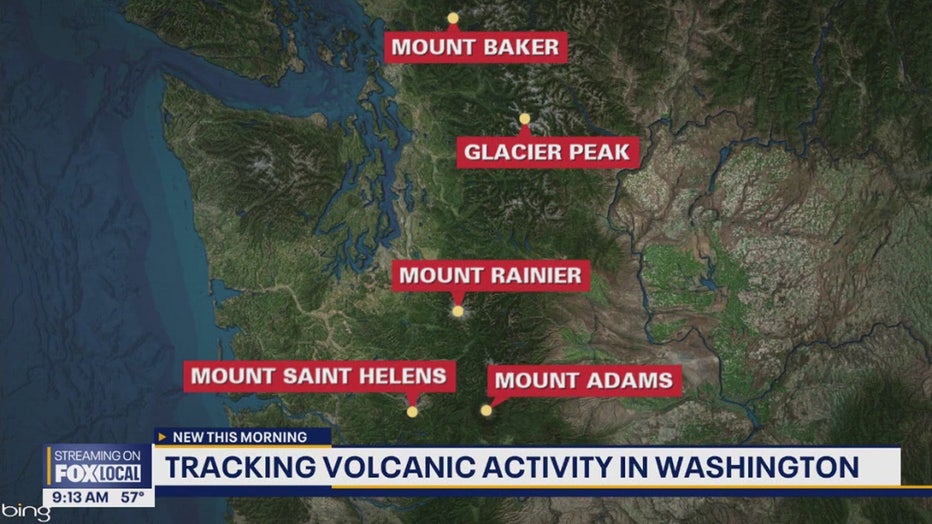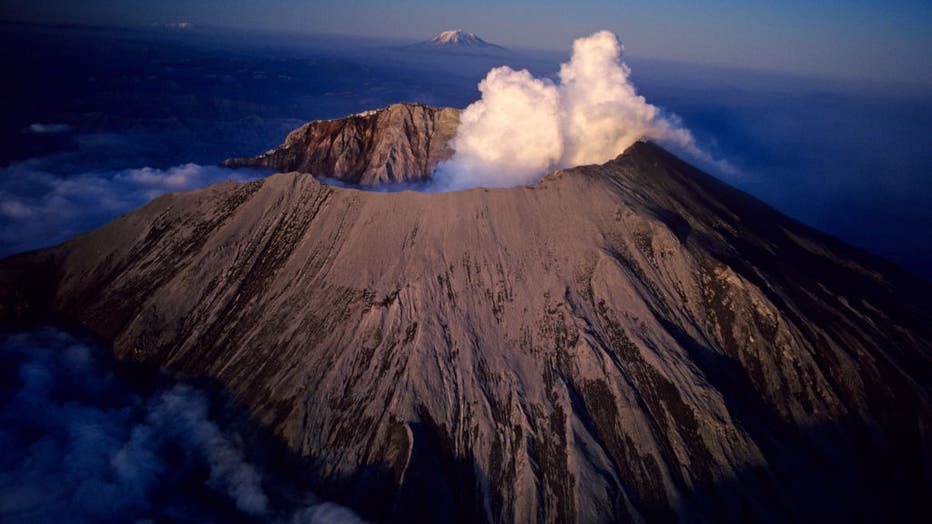Tracking volcanic activity in WA 44 years after Mount Saint Helens erupted
Saturday will mark 44 years since Mount Saint Helens erupted. Since then, the state has made big strides in tracking activity on Washington’s volcanoes.
On May 18, 1980, Mount Saint Helens exploded, blowing off around 1,300 feet of the mountain. The stratovolcano, which sent ash 80,000 feet into the atmosphere, killed 57 people. The primary cause of death was asphyxiation from the ash.

(Original Caption) 7/23/1980-Spirit Lake, WA- Looking more like a smoke cloud from an A-bomb blast than steam and ash from a volcano eruption, Mt. St. Helens sent this plume of steam and ash some 60,000 feet in the air, as the volcano awoke from a si (Getty Images)
Scientists are doing ongoing, active work to install new monitoring stations on volcanoes across the Cascades. The equipment can include things like infrasound, seismic and GPS sensors.
These stations can detect the Earth’s movements on the volcanoes, which can indicate that an eruption could be on the horizon.
Keep reading to learn more about the active volcanoes in Washington.
What are the five volcanoes in Washington?
- Mt. Baker
- Glacier Peak
- Mt. Rainier
- Mt. Adams
- Mount Saint Helens

There are five volcanoes located in Washington state.
Do any of the volcanoes in Oregon pose a risk to Washington state?
Mt. Hood also poses a large threat to some communities near the Oregon state line.
FOX 13 Seattle talked to Dr. Harold Tobin, director of the Pacific Northwest Seismic Network, on Good Day Seattle.
"One of the things we know from when Mount Saint Helens erupted back in 1980, and lots of volcanoes around the world, is they typically become seismically active," said Dr. Tobin. "Earthquakes start happening … an increasing number of earthquakes happen as magma is moving and an eruption is potentially underway. Mount Saint Helens started in March and the eruption happened on May 18th back in 1980. So that gave a lot of time for that sort of potential advanced warning."
Is there equipment to track volcanic activity in Washington?

1980s Smoking Horseshoe-Shaped Crater Top Of Mount Saint Helens After A Major Eruption May 18 1980 Washington USA . (Photo by R. Lamb/ClassicStock/Getty Images)
Tobin says that installing equipment on the volcanoes is challenging. It requires a lot of funding, along with permission and permitting to do this work in protected wilderness land.
The Cascade Volcano Observatory with USGS hopes to eventually install eight to 10 new monitoring stations on and near Mt. Baker. The University of Washington will be upgrading the single seismic station on Glacier Peak this summer. Scientists have plans to upgrade equipment on Mount Rainier as well. Maintenance is planned this summer at Mount Saint Helens.
Typically, there are about two eruptions in the Cascades every century. Mount Saint Helens is the most likely to have the next eruption, but if Mount Rainier blows, catastrophic mudflows called lahars could level communities like Orting and Puyallup. This is why scientists say this detection work is so important.
MORE NEWS FROM FOX 13 SEATTLE
Here's how much you need to earn to live 'comfortably' in Seattle
Kenmore man charged in deadly crash also claimed he would 'skin' girlfriend alive: docs
King County Council votes to raise minimum wage to $20 an hour
Councilmember's father has history of intimidating Woodinville officials
To get the best local news, weather and sports in Seattle for free, sign up for the daily FOX 13 Seattle newsletter.

